|
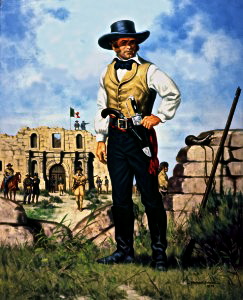 |
 |
|

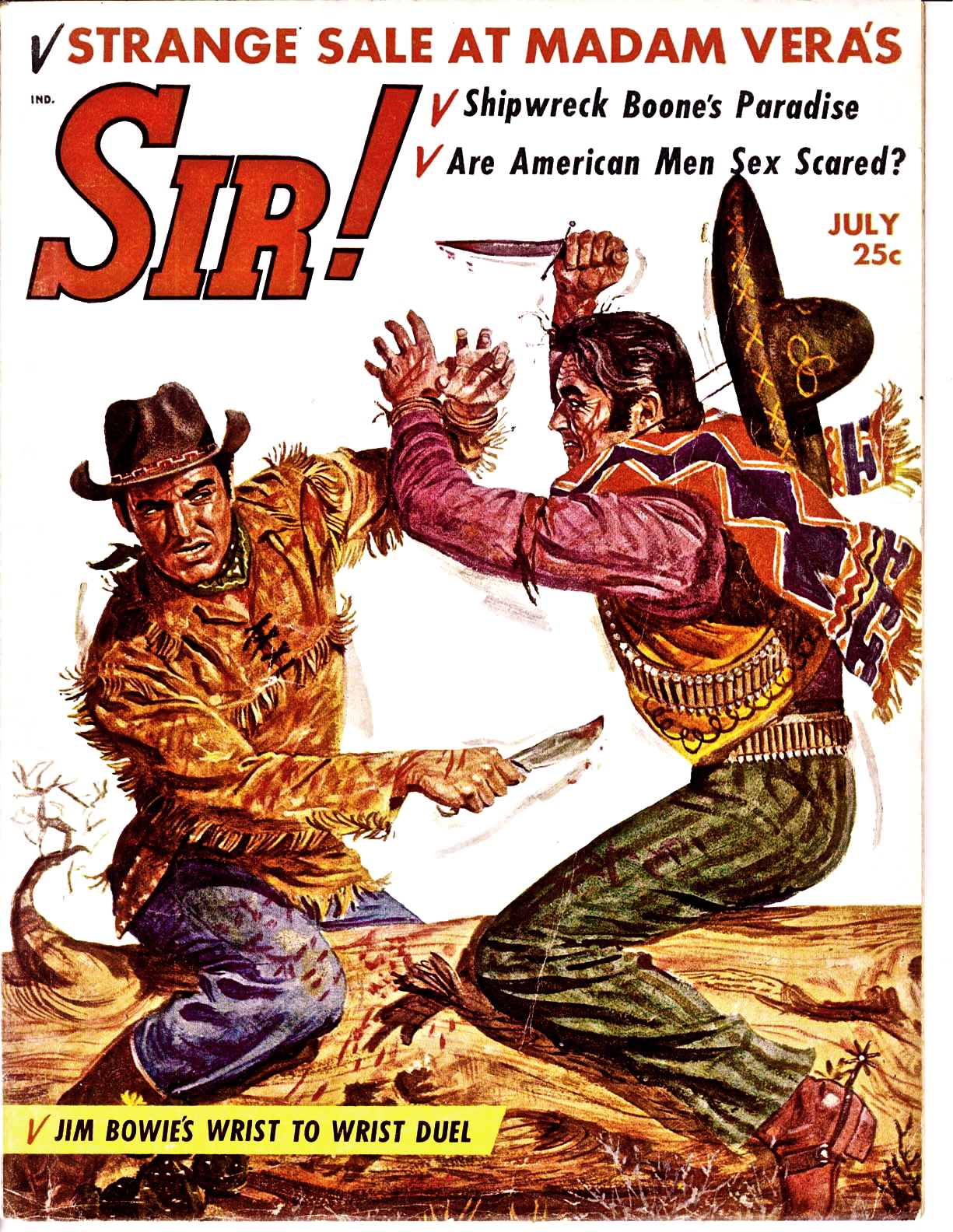
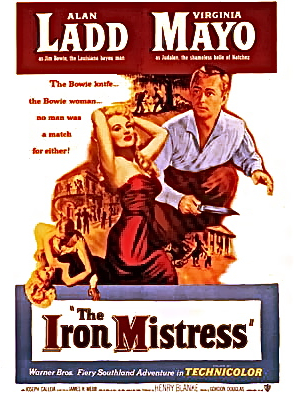
Iron MIstress
The original Bowie knife was two inches wide and a
quarter inch thick with the blade being about 12 inches long.
The back of the blade had a soft metal inlaid to catch the opponent's
blade during a scrape. Razor sharp was the top edge of the
clip point. In order to protect the hand a brass quillon was
in place.
|
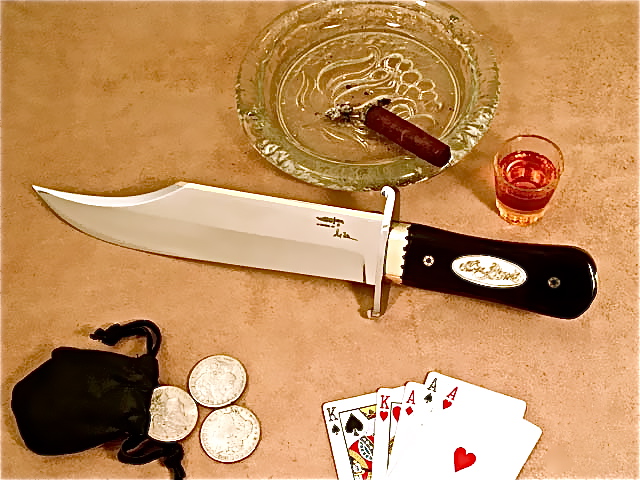
It Was During the Riverboat Gambling Heydays that an Interesting Story
Occurred in 1832
On a Mississippi steamboat four men were playing poker,
three of which were professional gamblers, and the fourth, a hapless
traveler from Natchez. Soon, the young naïve man had lost all his money
to the rigged game. Devastated, the Natchez man planned to throw himself
into the river; however, an observer prevented his suicide attempt, and
then joined the card game with the "sharps.”
In the middle of a high stakes hand, the stranger caught
one of the professionals cheating and pulled a knife on the gambler,
yelling, "Show your hand! If it contains more than five cards I shall
kill you!” When he twisted the cheater’s wrist, six cards fell to the
table. Immediately, the stranger took the $70,000 pot, returning $50,000
to the Natchez man and keeping $20,000 for his trouble.
Shocked, the Natchez man stuttered, "Who the devil are
you, anyway?” to which the stranger responded, "I am James Bowie.”
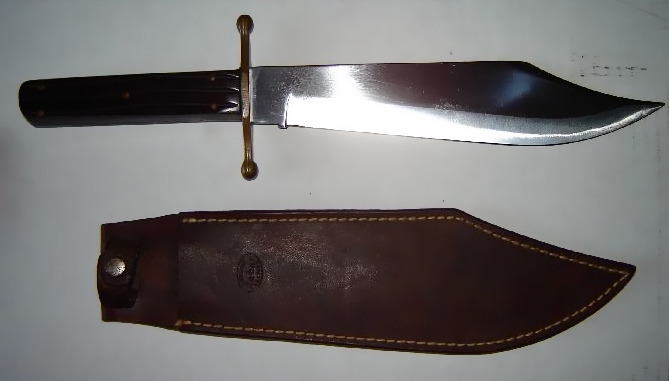

|
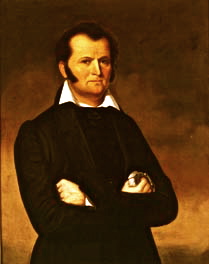
Jim Bowie
1796 - 1836
Jim Bowie and the Bowie knife have almost become
synonymous. In the early 1800's it was common place for men
to carry a knife as a sidearm but it wasn't until 1830 that the famous
Bowie knife was made and forever carved a niche in history.
The actual making of the Bowie knife was a
progression of knife designs. The first knife was claimed to
be designed by his brother Rezin in Avoyelles Parish in Louisiana and
made by a blacksmith Jesse Clift in order to protect his younger brother
from some of the company he was keeping.
This knife was referred to by many as Bowie's
butcher knife and was used at the Sandbar Fight. Another
rendition of the story according to Jim's older brother John was that a
blacksmith named Snowden, made a hunting knife for Jim which was used
during the duel. Either way the prototype and the legend had
begun.
In 1827 the famous duel occurred across from
Natchez, Mississippi on a Mississippi River sandbar. As a
second in the duel, Bowie found himself in the middle of the ruckus
armed with a butcher knife. In the events that followed
Bowie found himself badly beaten, shot and stabbed but before him laid
one man cut to ribbons and another one disemboweled.
In 1830 in Texas, Jim Bowie armed with the
famous Bowie knife made by James Black, was attacked by three men hired
to kill him. The stories flourished as Bowie wielded the
heavy knife against his attackers. In the end, one man was
almost beheaded, another was disemboweled and the third had his skull
split open.
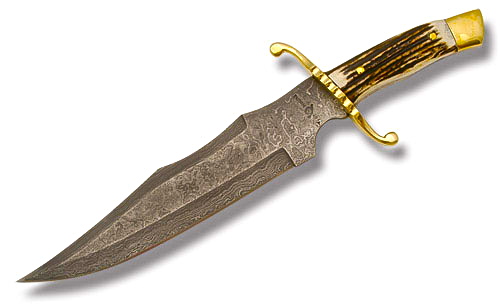 |
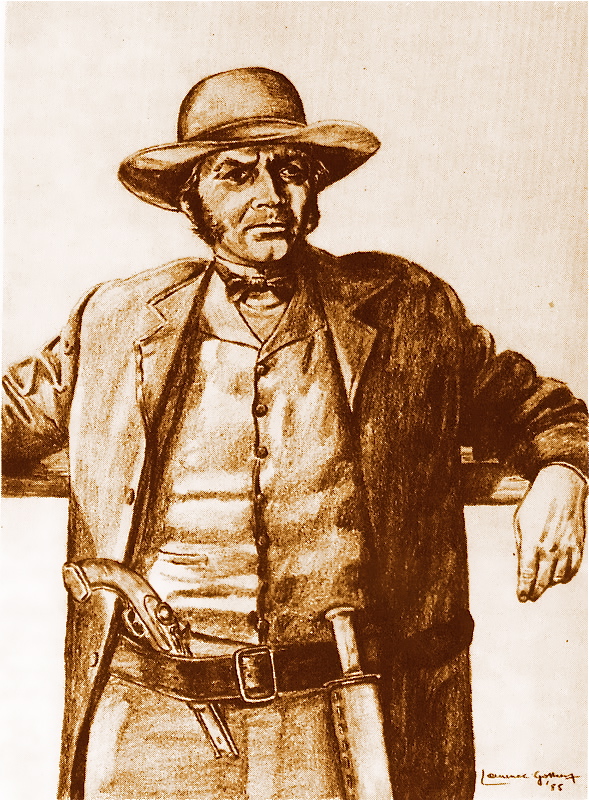 |
Vidalia Sandbar Fight - One of the Earliest Records of Jim Bowie Using
his Renowned Knife
Bowie was a slave trader and land speculator who became an instant
legend when he and his ferocious butcher knife emerged victorious from a
fight in 1827.
Jim Bowie's Vidalia Sandbar Fight, Account in Niles Weekly Register,
November 17, 1827. Under the headline of "Terrible Rencontre" the
Register recounts an "eye witness" account of the events that defined
the legend of Jim Bowie and the knife that bears his name.
Long standing political and personal animosities led to a September 1827
duel by Samuel Wells and Thomas Maddox on a sandbar in the Mississippi
River between the states of Louisiana and Mississippi. Both men brought
their pistols and their seconds for the confrontation. After the
requisite formalities, both men fired without anyone being hit. Another
shot was fired by the men, again, without the bullets finding their
mark. The duel ended without bloodshed, but the assembled onlookers, men
loyal to both Wells and Maddox, drew guns on each other and shots were
fired.
One of the men firing was Jim Bowie, a friend of Wells. In the ensuing
violence Bowie was hit in the side and killed another man. Bowie
shouted, "You have shot me, I'll kill you if I can" and lunged at his
attackers. He then, "...drew a large butcher-knife and endeavored to put
his threat into action." Two men set upon Bowie, one with a gun and the
other with a sword cane. The newspaper account states, "Bowie stabbed
Wright through the arm in two places, he then left him and went to
Alfred Blanchard --- made three stabs at him, one of which struck him in
the left side: he then returned to Wright, and gave him a stab in the
breast, which went to his heart --- he died instantly." |
|
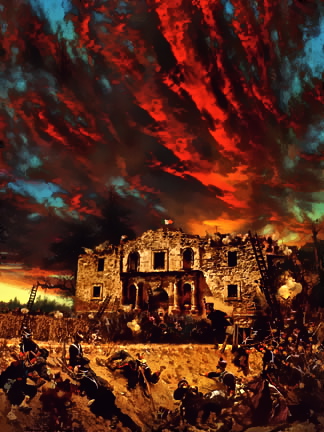 |
 |
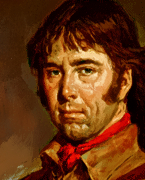
Davy Crockett |
March 6, 1836
Day 13 - At 1:00 am Mexican troops (1,400 men) move towards
positions. At 5:00 am Santa Anna gives signal : Mexican bugler sounds
Deguello, four columns of the Mexican army advance on Alamo.
Texans repulse twice the invaders with desperate, intense fighting.
Heavy Mexican casualties (nearly 600 killed or wounded). Battle
rages through The Alamo. 6:30 am : Last firing over. The Alamo has
fallen.
In the words of General Vincente Filisola, "... by grapeshot, musketshot
and the bayonet, they were all killed at last."
The Century Magazine in 1884
"The last one of the garrison went down under the violence of the
Mexicans. Colonel Bowie, who was sick in bed at the fall of the
fort, fired from his bed until his last shot was gone and he had a wall
of dead about him; the Mexicans dared not approach, but shot him from a
window, and, as the enemy came to his bed, nerving himself for a last
effort, the dying Bowie plunged the deadly knife which bears his name to
the vitals of the nearest foe, and expired. The original Bowie knife
was never found.
General Castrillon took Colonel Crockett, who stood alone in an
angle of the fort, the barrel of his shattered gun in his right hand, in
his left his huge bowie-knife, dripping blood. There was a fearful gash
across his head, and at his feet a cordon of nearly twenty foemen, dead
and dying. His captor, who was brave and not cruel, took his
silvery-haired prisoner to Santa Anna, who flew into a rage, and at his
command a file of soldiers shot down the dauntless Crockett. Santa Anna
had given the most imperative orders that no prisoners should be taken". |
|
What exactly happened on March 6, 1836 at the Alamo?
In 90 bloody minutes, the battle for the dominion of the Alamo was
over. Various published and unpublished accounts of the battle provided
by survivors from both sides, tell of the aftermath of the fighting.
Within each of these accounts there is a wealth of conflicting
information. |
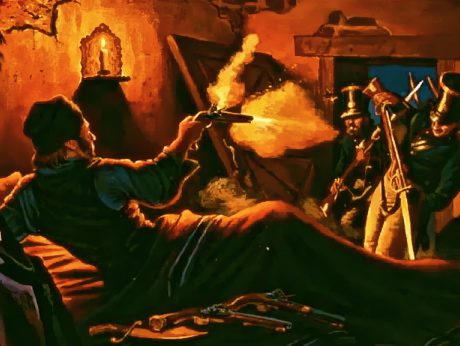 |
Jim Bowie's Death Fight at the Alamo
When Bowie's mother was informed of his death, she
calmly stated, "I'll wager no wounds were found in his back."
On the final day of the 13-day siege, legend claims
that it was Crockett who stole into Bowie’s room and gave the sick man
two pistols to be used for defense.
Various eyewitnesses to the battle gave conflicting
accounts of Bowie's death.
A newspaper article claimed that a Mexican soldier saw
Bowie carried from his room on his cot, alive, after the conclusion of
the battle. The soldier maintained that Bowie verbally castigated a
Mexican officer in fluent Spanish, and the officer ordered Bowie's
tongue cut out and his still-breathing body thrown onto the funeral
pyre. This account has been disputed by numerous other witnesses, and it
is thought to have been invented by the reporter.
|
|
Other witnesses maintained that they saw several Mexican
soldiers enter Bowie's room, bayonet him, and carry him, alive, from the
room. Various other stories circulated, with some witnesses claiming
that Bowie shot himself and others saying he was killed by soldiers
while too weak to lift his head. Alcalde Ruiz said that Bowie was
found "dead in his bed." |
Since Bowie's nurse, Madame Candelaria, never told the exact same
story twice about the sequence of events, who really knows what happened
that day?
In one instance, Madame Candelaria testified that Bowie died the day
before the final onslaught. On another occasion, she claimed she
received two wounds from the Mexican soldiers when she threw her body
over Bowie’s to shield him during the attack. She also said that Bowie
fired both his pistols, dropping Mexican soldiers in the doorway to his
room, and killed another with his great knife before being overrun.
Most accounts agree that Bowie was found dead on his cot, and is
probably the most accurate version. Bowie died on his cot, "back braced
against the wall, and using his pistols and his famous knife."
|
|